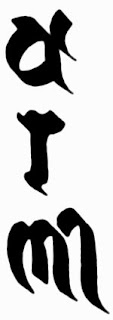Prebish reviews the many contributions, including his own, over the years and spells out the conclusions to date which are not unanimous. In fact there are four chronologies:
The long chronologyGombrich's answer to the problem of dating the Buddha came from a reassessment of the dates conveyed in records of Upāli successors as vinayadharas. The age at which each pupil was ordained, memorised the vinaya and died is recorded in a number of texts. Traditionally ages of monks are counted from their ordination, but Gombrich argues that in this case the ages where counted from birth. For one thing if the traditional chronology is used most of the monks would have lived into their 90's and one to 105. By counting the years from birth Gombrich is able to construct a plausible time frame for the lineage that does not contradict other known dates such as the coronation of Aśoka. This process yields a date of 404 BCE for the parinibbana with a margin of error of plus seven years or minus 5 years. Prebish seems happy to accept 404 BCE as the date.
This puts the death of the Buddha at 544/43 BCE and is accepted only by the Theravada tradition and not by scholars. The main reason for doubting it is that it gives dates for Aśoka that conflict with the evidence from his rock edicts - he was evidently crowned in 268 BCE give or take a year, and therefore a gap of 60 years remains unaccounted for.
The corrected long chronology
Prebish glosses over this date which appears to simply subtract the 60 years and give dates of 484/483 BCE. It seems as though this date became widely accepted
The short chronology
This date relies on texts which state that the coronation of Aśoka was exactly 100 years after the parinibbana, meaning that the Buddha died in 368 BCE. However the problem here is that all ancient texts are not in agreement over the elapsed time. One says 116 years, another 160 years. It is however supported by archaeological evidence and gained some heavy weight supporters.
The Dotted Chronology
The idea here is that when Upāli finished collected the Vinaya immediately after the Buddha's death he placed a dot on the manuscript. Each subsequent year a further dot was added to keep track of the years. The obvious flaw in this theory is that the vinaya was initially memorised and not written down until some centuries later. For at least 300 years there was no manuscript to place dots on.
Though Prebish accepts Gombrich's date for the parinibbana he believes that Gombirch was in error in his dating of the councils which rests on much shakier ground. In fact it involves making an assumption about the traditional date of 100 years between the first and second Buddhist councils that is not supported but only makes sense in the light of traditional historical narratives. After having dealt with the precise lifespans of the vinayadharas Gombrich makes the assumption that the 100 years is a round figure and suggests that it was in fact more like 60 years since that produces a better fit.
Prebish argues for letting the new chronology stand without altering the span between the councils. One of the consequences of this new chronology is that it places Aśoka front and centre in the first major split amongst the Sangha. The historical king is likely to have presided over the unofficial "non-canonical" council (recorded in some texts as occuring between the 2nd and 3rd councils) which resulted in the first Sanghabheda or schism. 18 years later Aśoka may well have convened the 3rd council at Pāṭaliputra (the Aśokan capital city) in order to try to "reaffirm Buddhist orthodoxy" in his new role as Dharmarājā.
An earlier article by Prebish and Jan Nattier makes it seem likely that it was the Sthaviravādins who split first, and the Mahāsaṃghikas who represented the conservative mainstream. The issue seems to have been the number of rules which the Sthaviravādins were seeking to increase. Evidence for this is the number of rules in the various surviving Pratimokṣa Sūtras with the Mahāsaṃghikas having the least.
This is a brief gloss of Prebish's article which is available on the internet (link below) and is recommended if you have an interest in Buddhist history. The original Gombrich article is less easy to get hold of - try an interlibrary loan if you don't have access to a major University library.
Bibliography
- Gombrich, Richard. 1992. "Dating the Buddha: A Red Herring Revealed." In Die Daiterung des Historischen Buddha Volume 2, edited by Heinz Bechert, Vanden-hoeck & Ruprecht, 237-259.
- Nattier, J and Prebish, C. "Mahāsāṃghika Origins: The Beginnings of Buddhist Sectarianism." History of Religions, 16, 3 (February, 1977), 237-272.
- Prebish, Charles. 2008. "Cooking the Buddhist Books: The Implications of the New Dating of the Buddha for the History of Early Indian Buddhism", Journal of Buddhist Ethics, vol.15,



